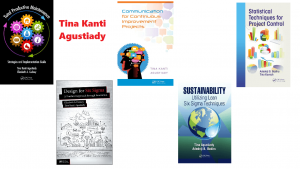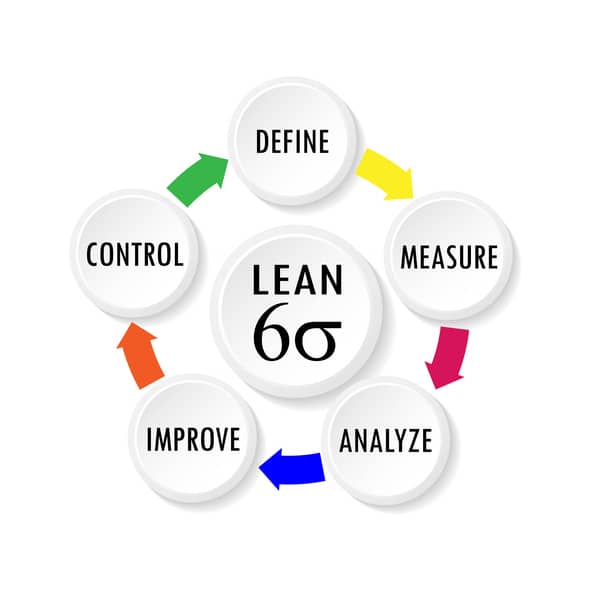Six Sigma expert and author Tina Agustiady has seen plenty of things – “the good, the bad and the ugly” – in her career that focuses on teaching both university students and business leaders on the best strategies for implementing process improvement.
In a recent interview with Six Sigma Daily, Agustiady stated that in her experience, there’s one process improvement issue that isn’t talked about enough: change management and culture.
“We need to emphasize the importance of the Lean culture first versus using tools and techniques,” Agustiady said. “Until we are all on the same page with management support and cultural change, no initiative will work.”
In a wide-ranging interview, Agustiady talked about how to best implement that culture and some of the trends she sees developing in process improvement.
Active Practitioner and Award-Winning Author
Agustiady is a graduate of Ohio University with a degree in industrial and manufacturing systems engineering. She immediately became interested in the potential for process improvement when taking an online certification course on Lean Six Sigma after graduation, saying “I couldn’t get enough of it.”
She has taught classes for online Lean Six Sigma courses, trained and certified students for the Institute of Industrial Systems Engineers and served as an editor for the International Journal of Six Sigma and Competitive Advantage.
 She’s also authored or co-authored many books, including the Crosby medal-winning “Design for Six Sigma: A Practical Approach through Innovation.” The medal is given by the American Society for Quality (ASQ) to authors who write books that make a significant contribution to the principles and techniques of quality management.
She’s also authored or co-authored many books, including the Crosby medal-winning “Design for Six Sigma: A Practical Approach through Innovation.” The medal is given by the American Society for Quality (ASQ) to authors who write books that make a significant contribution to the principles and techniques of quality management.
ASQ also awarded Agustiady with a Feigenbaum medal in 2016, which is given to those 35 or younger who display outstanding characteristics of leadership, professionalism and potential in the field of quality.
Sustainability Agent
Agustiady recently started a position as a sustainability agent. The goal is to support organizational leaders in building a culture of continuous improvement that lasts.
“I work with all parts of the organization in order to build skills in operating a lean management system, design systems to drive leadership behaviors, provide ongoing coaching and facilitate performance improvement tracking,” she said.
The position dovetails nicely with Agustiady’s drive to teach others so that the improvements made through applying Lean and Six Sigma last, ideally, forever. That’s also a main focus of the book “Design for Six Sigma” that she co-authored with Elizabeth A. Cudney, an associate professor of engineering management and systems engineering at Missouri University of Science and Technology.
Design for Six Sigma
The book offers readers “an innovative continuous improvement methodology for designing new products, processes and services by integrating Lean and Six Sigma principles,” Agustiady said.  Design for Six Sigma (DFSS), supports the goal of producing robust products, services or processes right the first time.
Design for Six Sigma (DFSS), supports the goal of producing robust products, services or processes right the first time.
This is accomplished “by using the voice of the customer to meet Six Sigma performance,” Agustiady said. “Robust designs are insensitive to variation and provide consistent performance in the hands of the customer.”
“DFSS is used to meet customer needs by understanding their requirements, considering current process capability, identifying and reducing gaps and verifying predictions to develop a robust design.”
Trends in Process Improvement
Agustiady said she sees robotics and automation as among the biggest trends across many industries. That includes using automation to handle routine tasks, freeing employees for more creative work.
But Agustiady said process improvement also plays an important role.
“We are automating more and more, but we need Lean Six Sigma to help us do it accurately and efficiently,” she said.
Sustainability also ranks among the top trends for Agustiady. She called it one of her passions.
Why? Because while Lean Six Sigma is gaining popularity and being implemented more widely, most experts agree that “learning how to sustain the results seems problematic at best and unattainable at worst,” said Agustiady.
She added, “Reverting to the old way of doing things is inevitable if sustainability measures are not a part of the methodology. Currently there are no standard resources on how to be sustainable or on using statistical techniques and practices.”
“Six Sigma methodologies will help to make process-focused decisions that will achieve the goals of sustainability and allow organizations to gain true benefits from process improvements.”
She also remarked that whenever Six Sigma methodologies are applied, the ultimate goal should be kept in mind.
“The main concept is to work smarter, not harder,” she said. “I find a lot of engaged employees from frankly just being able to do their job easier.”



